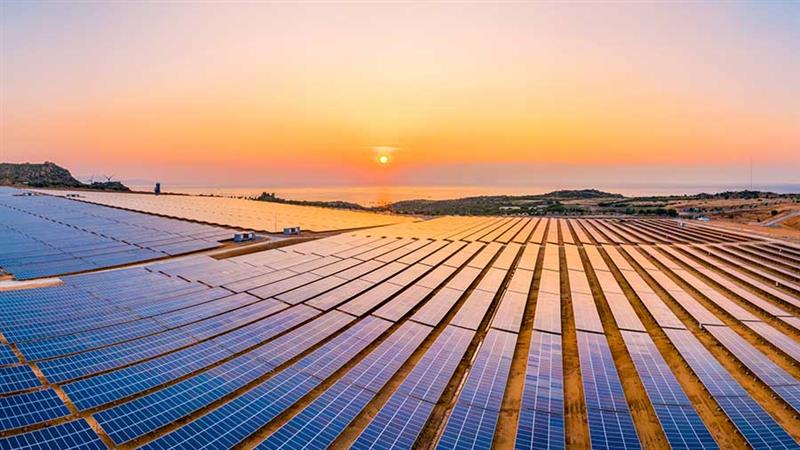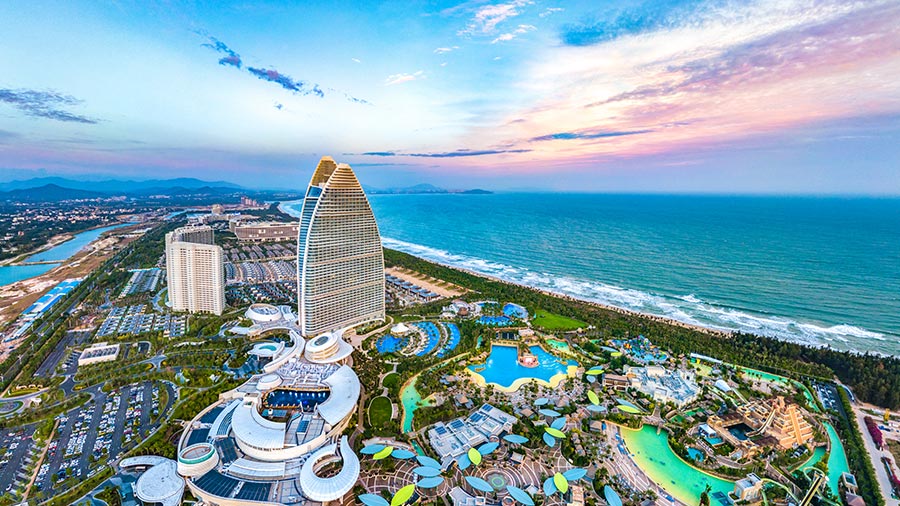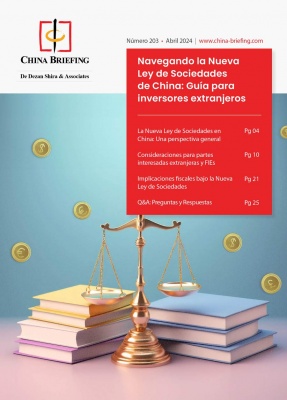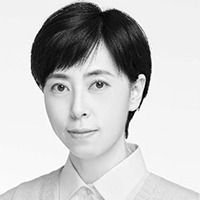China Industry Report: Apr. 11
 Apr. 11 – This is a regular series of relevant industry news from around China.
Apr. 11 – This is a regular series of relevant industry news from around China.
Marine transport and shipbuilding
•South Korean shipbuilder Hyundai Heavy Industries said on April 4 it has opened an R&D center in Shanghai to enhance its position in the Chinese market.
The site will focus on construction equipment, electro-electric systems and marine engines for the fast-growing Chinese market. Long-term goals include the development of products such as smart grids, offshore wind turbines and robot systems for global markets.
This year the company will employ 30 engineers at the center and aims to recruit 120 by 2012 and 200 by 2013.
•Norwegian ship-equipment maker TTS Group ASA said on April 4 its unit TTS Energy AS will supply drilling gear worth US$80 million for two jack-up rigs under construction at Chinese Dalian Shipbuilding Industry Offshore Co (DSIC).
With the current deal, DSIC exercises two out of three options to a contract the two companies signed in November 2010. TTS will deliver the equipment kits in the second half of 2013.
•China Ocean Shipbuilding Industry Group Ltd said its attributable loss had narrowed to US$111.5 million in 2010 from US$252 million in 2009.
The firm said that its figures were affected by a number of operational and financial issues during 2010, including a delay in vessel deliveries due to quality problems with a new ship model. The company also received seven vessel cancellation notices from customers.
China Ocean Shipbuilding said that China’s shipbuilding industry had shown signs of recovery, especially in the container sector, but the chemical tankers sector, the company’s main business for 2010, remained challenging.
The company said that following the delivery of chemical tankers and the termination of shipbuilding contracts it will shift its focus to heavy-lift vessels. China Ocean Shipbuilding added that it expected the shipbuilding market to remain challenging in 2011.
•Hongkong United Dockyards, a joint venture between Swire Pacific and Hutchison Whampoa, plans to boost the capacity of its Tsing Yi dry dock facility, the South China Morning Post writes.
The company, which provides ship repair, harbor towage and salvage services, intends to build a second larger floating ship repair dock designed to handle vessels with a capacity of 7,000 twenty-foot equivalent units (TEUs) and higher, which make up about 22 percent of container ships globally. Currently, the company’s facilities are able to service vessels with a capacity of up to 6,500 TEUs.
The company plans to call a tender for the project contractor and move to obtain an environmental permit for the facility. Hongkong United Dockyards is also seeking government approval to hire mainland specialists to fill in the shortage of local workers as it would need up to 500 for the new dock.
Solar power
•China will trim its 2020 nuclear capacity target and raise its solar capacity goal after last month’s events in Japan, Reng Dongmin from the National Development and Reform Commission said today at a conference in Beijing.
Previously, the country aimed to have 80 gigawatts of installed nuclear capacity and 20 gigawatts of operating solar facilities by 2020. The new targets are being discussed.
•U.S. technology-based performance materials supplier Ferro Corp on March 30 said it has opened a photovoltaic research and development laboratory in Taiwan.
The company said the move should enable it to provide timely technical support to Taiwanese customers as well as innovative solutions that increase solar cell efficiency and cut production costs.
The Ferro Taiwan Technology Center located in Taipei will offer testing and customer technical assistance to support product development and to help resolve technical issues.
•Schiller Automation GmbH & Co said in late March that it had won a facility automation contract for a new thin-film photovoltaic manufacturing plant in China.
According to the company, a provider of production solutions to the solar power sector, facilities with a similar design are already used in eight operating thin-film production plants.
Schiller did not disclose any details about the customer, saying that the current deal comes to expand its operations in China.
•Chinese solar panels maker Suntech Power Holdings Co Ltd is to introduce to the market a 245-watt module tailored for the needs of the residential and small-scale rooftop solar market in Europe.
The 60-cell mono-crystalline modules has an efficiency of 14.8 percent. It includes Suntech’s TruPower technology that enhances both the unit’s efficiency and the balance of system cost to power ratio as it neutralizes the light induced degradation effect.
•Chinese solar wafer maker LDK Solar on April 4 said it had opened a solar-cell manufacturing plant in China’s Anhui Province, increasing its total solar cell production capacity to 570 megawatts a year.
The company expects the capacity expansion to lead to a considerable reduction in module manufacturing costs, beginning in the second quarter of the year.
As many as 2,014 employees have been hired at the plant in the city of Hefei.
•Japan’s Mitsubishi Heavy Industries Ltd, or MHI, said it had started negotiations with Taiwan-based solar modules maker Auria Solar over a partnership for thin-film modules.
MHI said the move would help the two companies strengthen their cost competitiveness in thin-film photovoltaic modules and step up their international expansion.
The talks will focus on a capital investment by MHI in Auria Solar, technical cooperation and transfer of some MHI production lines to Auria Solar.
At the same time, MHI will further produce thin-film modules from a production line for microcrystalline tandem PV modules at its Isahaya plant in Nagasaki prefecture, it added.
Auria Solar is also planning to build a new plant to double its current annual output capacity of 60 megawatts.
•Chinese photovoltaic equipment major JA Solar said on April 4 it will supply up to 400 megawatts of solar cells to U.S. electronics manufacturing services firm Jabil Circuit Inc as part of a strategic partnership.
Under the two-year partnership agreement, JA Solar will also supply certified module designs to Jabil for producing up to 200 megawatts of modules a year with JA Solar cells.
The Chinese firm will grant production rights for its module portfolio to Jabil’s solar plants, including those in Mexico, Poland and China.
Module manufacturing is expected to start in the third quarter. The agreement also envisages co-operation in the marketing of JA Solar modules with a special focus on the United States.
•Chinese solar wafer maker LDK Solar said on March 31 it has closed the US$33 million acquisition of a 70 percent interest in photovoltaic panel producer Solar Power Inc, or SPI.
The company paid US$ 10 million of the amount in January and has now transferred the remaining US$23 million.
Via the transaction, SPI will be able to speed up the development of its project portfolio, which includes utility-scale power plants and commercial and industrial distributed generation systems. At the same time, SPI’s expanded portfolio is seen to increase the downstream benefit to LDK Solar’s vertical-integration model through module supply for large-scale projects, the Chinese firm said.
•Chinese photovoltaic inverters maker Sungrow Power Supply Company said on April 5 it inaugurated on March 31 the headquarters of its Ontario unit Sungrow Canada Inc (SCI).
SCI, a joint venture between the Chinese company and local solar power-focused corporation HiFi Solar Energy Ltd, intends to invest US$10.4 million in Ontario in the next few years. The first US$5.2 million will be spent on inverter assembling and testing lines that will create up to 50 green jobs in its Vaughan facility.
SCI’s facility, spanning 2,323 square meters, has an annual production capacity of 200 megawatts of solar inverters. The first models are 100 kilowatt, 250 kilowatt and 500 kilowatt inverters.
The ribbon-cutting ceremony included a signing of a Memorandum of Understanding between SCI and PowerStream, Ontario’s electricity distribution company, to jointly promote solar power development.
Founded in 1997, Sungrow today has annual sales of nearly US$100 million. The company is building a new facility in Hefei, China, and is targeting 3 gigawatts by end-2012.
•3M said on April 6 it would build a factory for photovoltaic materials and green energy products at the high-tech park in Hefei, as part of its global expansion strategy.
The new facility, 3M Materials Technologies (Hefei) Co, represents 3M’s ninth production location in China. It follows recent expansion of 3M’s solar material business in the United States, Germany and Singapore.
Among the products to be manufactured at the new factory is the company’s Scotchshield Film, a backside barrier film used in crystalline silicon solar photovoltaic modules. Construction at the site, to be done in two phases, is to start in the second quarter of 2011.
•Clean energy firm China Everbright International said last week it would take part in a 3.7-megawatt amorphous silicon thin-film photovoltaic power project in Germany.
The company has signed an investment agreement with a German contractor, details of which were not disclosed. Investment in the project, to be sited in Schonewalde in eastern Germany, is estimated at US$11.5 million. The facility will benefit from the local incentive schemes for a 20-year period.
The Schonewalde project represents the first overseas development of China Everbright. The company entered the alternative energy sector in 2009 and since then has built a number of biomass and PV power plants in China.
Wind power, hydro power
•China’s Huadian Power International Corporation Limited said last month that its attributable profit dropped to US$25.9 million in 2010 from US$177 million the previous year, affected by increased coal prices.
The company, which operates thermal electric, hydropower and wind power plants, said that earnings per share fell to US$0.004 from US$0.029. No dividend was proposed by the company’s management.
Huadian Power’s turnover rose to US$6.89 billion from US$5.57 billion thanks to the increase of on-grid power sold to 121.30 million MWh, up 21.35 percent on the year. Power generation rose 21.23 percent year-on-year to 130.29 million MWh.
•Alternative energy firm Hong Kong Energy Holdings reported a 2010 net profit of US$43.2 million against a net loss of US$1.34 million the year before.
In August the company acquired the renewable energy business of its parent, HKC Group, including a 200-megawatt wind farm in Hebei, a 201-megawatt wind power plant in Gansu, a 59.5-megawatt wind power facility in Heilongjiang, and a 25-megawatt waste-to-energy unit in Shandong.
In a separate statement, the company said it was to change its name to China Renewable Energy Investment Ltd to better reflect its business focus.
The company posted basic earnings per share of US$0.051 in 2010 versus a loss per share of US$0.002 in the previous year. Revenue rose to US$3.1 million from US$1.36 million, mainly as a result of the acquired generating assets. At end-2010 Hong Kong Energy had unrestricted cash and cash equivalents of US$46.65 million.
•Chinese utility GD Power Development Co Ltd reported a net profit of US$367 million for 2010, down 3.83 percent on the year. Revenue grew by 19.98 percent to US$6.22 billion.
Seeking new sources of revenue, the company has already expanded into the renewable energy sector. During the year, it raised its installed wind and hydropower capacity to 7.74 gigawatts. Hydroelectric capacity grew by 113.63 percent on the year to 6.38 gigawatts, while wind capacity was 1.36 gigawatts, up 190.38 percent in annual terms. Solar power capacity was only 10 megawatts.
Total capacity at the end of the year stood at 28.79 gigawatts, with thermal power accounting for the better part of the figure. GD Power registered a 20.47 percent year-on-year rise in power generation to 128.42 TWh in 2010.
•China WindPower Group Ltd said on April 4 it has raised US$115 million via the sale of guaranteed bonds due in April 2014. The company will use the proceeds to cover general corporate needs, bolster its working capital and support wind farm investments.
The bonds, to be guaranteed by some of the company’s subsidiaries, will carry an annual coupon of 6.375 percent, payable semi-annually. HSBC acted as lead-manager and book-runner of the offering.
•Danish wind turbine maker Vestas Wind Systems said it has bagged an order to deliver 48 megawatts of wind turbines to wind farm operator China Longyuan Power Group.
Under the agreement, Vestas will supply and install 24 units of its V80-2 megawatt turbine in Putian county, southeastern China, and will also provide servicing and maintenance for the turbines. Delivery is slated for the third quarter.
Vestas said Longyuan is one of its largest Chinese customers and since 2005 the two companies have collaborated in some 500 megawatts of wind projects.
•Chinese wind turbine major Sinovel Wind Group saw its net profit for 2010 rise by 51 percent on the year to US$437 million, in line with the company’s guidance. Revenues in 2010 reached US$3.1 billion, up 48 percent on the year, the company said in a statement last Tuesday.
Sinovel will distribute a stock dividend of 10 additional shares plus a cash dividend of US$1.525 for every 10 shares outstanding. Early this year, Sinovel completed a US$1.44-billion initial public offering in Shanghai. The proceeds will be used for the development of three wind farm projects.
•China installed 18.9 gigawatts of fresh wind power capacity in 2010 bringing the global to 38.3 gigawatts, the Global Wind Energy Council, the Chinese Renewable Energy Industry Association and the Chinese Wind Energy Association reported today.
The new figures also show a 24 percent growth, similar to that in 2009, in working wind power installations around the globe. Total installed capacity now stands at 197 gigawatts.
The numbers differ from GWEC’s earlier estimates as China reports include grid-connected turbines, delivering electricity, even if they have not yet completed commissioning and acceptance procedures. In February GWEC said that 35.8 gigawatts of wind power facilities were installed globally in 2010 and China contributed 16.5 gigawatts.
“China has become the single largest driver for global wind power development. In 2010, every second wind turbine that was added anywhere in the world was installed in China,” Steve Sawyer, GWEC’s secretary general, said. The wind market in the Asian country doubled each year between 2005 and 2009, while in 2010 total installed capacity arrived at 44.7 gigawatts.
At present, four out of the top 10 wind turbine makers come from China. More than a half of the equipment for Chinese wind farm projects is made at home.
According to the Chinese government, the country will have 200 gigawatts of installed wind power capacity in 2020, producing 440 TWh of power a year.
•After becoming the global leader in terms of newly installed wind power capacity in 2010, China is now planning to tighten the approval procedures for wind farm projects as it seeks to moderate the sector’s rapid growth, China Securities Journal writes.
As part of the plan, local governments will reportedly have to get approval from the National Energy Administration for all projects whose capacity comes below 50 megawatts. At present, local governments are only required to notify about wind power developments of a lower than 50-megatt capacity, without seeking the central authorities’ express permission.
China added 18.9 gigawatts of fresh wind power capacity in 2010, out of the 38.3 gigawatts installed globally, the Global Wind Energy Council, the Chinese Renewable Energy Industry Association and the Chinese Wind Energy Association reported just a few days back.
“China has become the single largest driver for global wind power development. In 2010, every second wind turbine that was added anywhere in the world was installed in China,” Steve Sawyer, GWEC’s secretary general, said. The wind market in the Asian country doubled each year between 2005 and 2009, while in 2010 total installed capacity arrived at 44.7 gigawatts.
This industry report brief is courtesy of AII Data Processing.
- Previous Article Chris Devonshire-Ellis: China-India Event in London
- Next Article China Briefing Releases New China Tax Guide for 2011



























